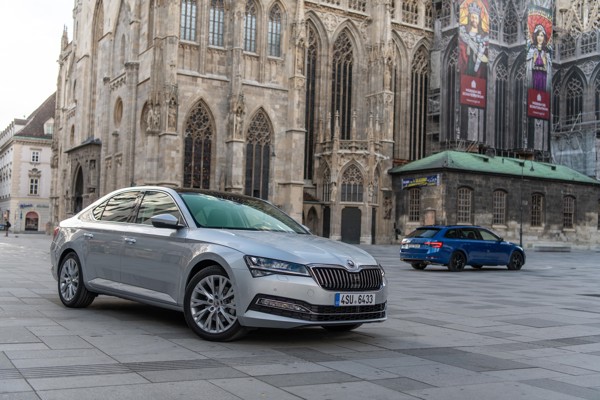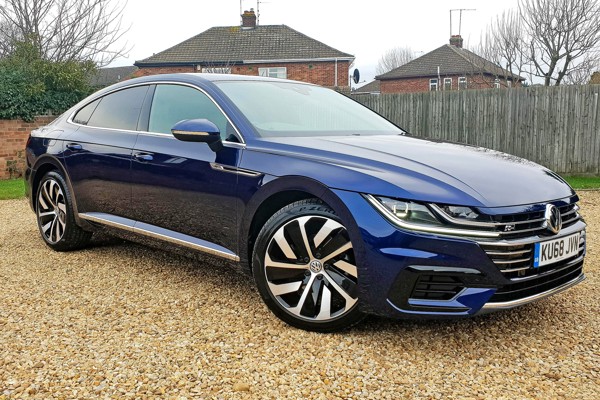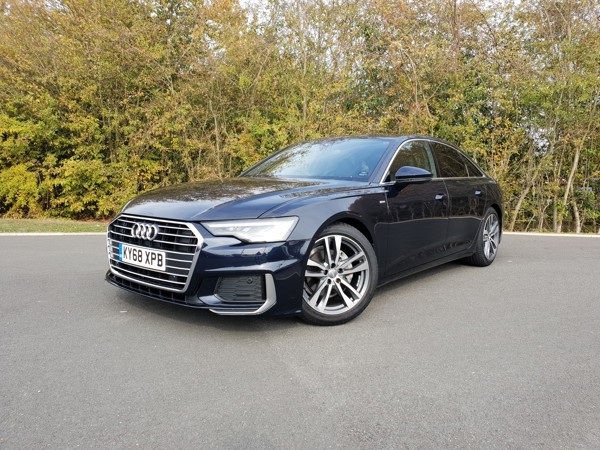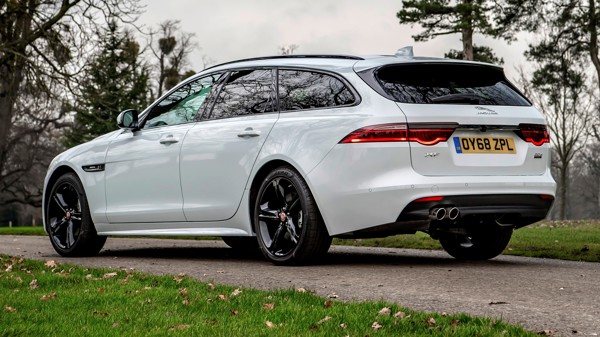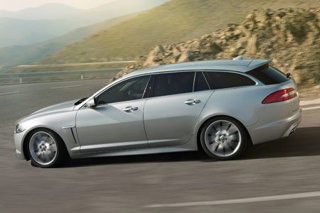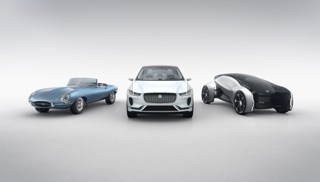Review
May 2018 - final test
Our long-term XF has now returned to Jaguar after eight months and one thing remained consistent throughout that time: long journeys became almost a pleasure and never a chore.
As well as my regular 75-mile round-trip commute, the XF was adept at covering sizeable mileages effortlessly, providing a high level of comfort and refinement for its occupants.
It was the ideal car to use for my family’s now-traditional pre-Christmas trip from Norfolk to Dublin, while chauffeuring a couple of colleagues to a Fleet200 Executive Club in Bradford earned the car plenty of praise from its passengers.
The XF also proved to be impressively fuel efficient. We averaged 51.2mpg, comfortably above the Equa Index real-world figure of 45.7mpg (its official combined fuel economy is 65.7mpg).
It also competes well on running costs. A recent analysis (Fleet News, March 22) found there was little to separate it from its Mercedes-Benz E-Class and BMW 5 Series rivals, highlighting just how competitive this sector is.
However, there are areas of the XF which feel dated next to the newer cars in its sector.
The infotainment system – and sat-nav in particular – is less intuitive and more fiddly to use, while the operation of some other ‘convenience’ technologies seem hit and miss.
Prime among these is the keyless entry system, which worked without fail when pulling a door handle to unlock and open a door, but locking it was inconsistent.
Pressing on or near the dimple would more than often fail to lock it, meaning we had to use the key instead which defeated the purpose of the keyless system somewhat.
But even though it may trail E-Class and 5 Series in several areas, the XF showed us enough qualities in our test to confirm that a company car driver who chooses it should not be disappointed.
March 2018
The executive sector is a fiercely competitive one, with little to separate the main challengers.
Over the 10,648 miles we’ve driven our long-term Jaguar XF, it has proved to be an excellent vehicle and has demonstrated why it was named the best executive car in the 2016 Fleet News Awards.
However, the strength of the sector meant that the following year the honour went to the Mercedes-Benz E-Class, with the BMW 5 Series last week taking the crown for 2018.
In our time with the XF, one of its strengths has been its efficiency: it is currently averaging between 50mpg and 52mpg per tankful, which is significantly higher than the Equa Index real-world figure of 45.7mpg. The official combined fuel economy is 65.7mpg.
This puts it between the BMW 520d 190 SE (62.8mpg) and Mercedes-Benz E220 194 SE (72.4mpg). Equa figures are not available for the BMW or Mercedes-Benz.
The Jaguar also sits between the two German cars for employee benefit-in-kind (BIK) tax.
Its CO2 emissions of 114g/km puts it in the 24% BIK tax band which, coupled with its £37,295 P11D price, means a 40% taxpayer faces an annual bill of £3,580.
The BMW (119g/km and £37,515) attracts a BIK bill of £3,752 and the Mercedes-Benz (102g/km and £37,205), £3,283.
However, the Jaguar does trail its rivals when overall running costs are considered.
According to data from KeeResources, the XF will cost 46.95ppm over a four-year/80,000-mile cycle. The 520d will cost 44.34ppm and the E220 44.77ppm.
Part of this is down to the difference in residual values and SMR costs.
The XF will be worth £11,525 at the end of the cycle, with SMR of 6.25ppm. The 520d is valued at £12,700 with SMR of 4.42ppm and the E220 is £12,350 and 5.68ppm.
But the differences are small, and any driver picking any of these cars should not be disappointed.
February 2018
I’m a big fan of our long-term Jaguar XF, but I’ve spent more time in it over the past month than I would have liked.
This was mainly down to one morning when a combination of high winds, closed roads, a broken railway crossing and the UK’s largest agricultural and machinery show taking place just across from our office meant that my usual one-hour commute instead took three-and-three-quarter hours.
While the weather conditions and other unforeseen circumstances were obviously not the Jaguar’s fault, the commute did remind me of an issue with the sat-nav system I’d had about a month earlier.
On that occasion, I was heading home around the M25 when the overhead gantries told me a stretch of the motorway ahead was closed due to an accident.
Unfortunately, the XF’s sat-nav didn’t seem to know about this and – as there was no traffic build-up – treated it as open and clear.
This meant that as soon as I turned off one junction earlier than I was meant to, all the sat-nav wanted to do was to re-route me back on to the closed motorway.
I’d written this off as a one-off, but a similar event happened on the windy morning last month – this time two lorries had been blown over on the A47 near Wisbech, closing the five-mile stretch entirely.
Google Maps on my phone told me it was closed, but even an hour-and-a half into the road closure the sat-nav continued to say it was open.
Even before this I found the traffic information to be unreliable, and this latest incident makes me trust it even less.
The XF has now travelled just more than 8,000 miles and this has meant it has also needed its first AdBlue top-up.
This was straightforward. The filler cap is positioned high up on the passenger side of the boot, and a 10-litre top-up pack (£14 from a local filling station) poured easily and spill-free into it.
January 2018
Rear-wheel drive cars and icy or snowy conditions generally don’t mix well. Front-wheel or four-wheel drive vehicles offer much better traction on slippery roads.
This is, of course, because front-wheel drive cars tend to have the weight of the engine above the driven wheels, keeping them firmly planted on the ground.
Rear-wheel drive cars usually have an empty boot above the driven wheels, meaning they struggle for traction much more than their front-wheel drive counterparts.
The XF has a front-engined, rear-wheel drive configuration. But it has incorporated technology to minimise the risk of losing grip in slippery conditions. One of its four driving modes is ‘rain/ice/snow’.
This setting automatically dampens acceleration and applies more gradual traction for slippery conditions.
This makes the car’s throttle response feel sluggish compared to when the car is in ‘normal’ mode, but also makes it less likely the wheels will lose traction.
On the few occasions I’ve switched to this mode in slippery conditions, traction has definitely improved.
The XF is well equipped for cold weather motoring in a number of other ways.
It is fitted with a heated front windscreen which makes de-icing the car an easy and quick task, while the heated rear windscreen automatically comes on with the ignition when the outside temperature drops below a certain level.
Our test model is fitted with some pretty effective heated front seats. They are fiddly to operate as you have to use the infotainment system’s touchscreen to switch them on and off as well as adjust the heat setting.
It also takes a couple of minutes before you feel the heat coming through, but when it does, it is fierce, even on the lowest setting.
It doesn’t take long until I have to switch the heater off before it becomes uncomfortably hot. However, it does have a hidden benefit: the heated passenger seat is ideal for keeping food warm on the way home from the takeaway!
December 2017
The beginning of my spell in our long-term Jaguar XF has coincided with our annual pre-Christmas trip to see the Irish branch of the Ryan family, and I would have been hard-pressed to have found a car better suited to the task.
One of the main purposes of the trip is to deliver Christmas presents to my older brother’s family and this makes the wish-list for the round trip between my home in Norfolk and Dublin is simple.
Ideally the car we go across in should to be large enough to accommodate presents, my parents and our luggage, it should be comfortable and well suited to motorway driving, and be fuel efficient to keep costs as low as possible.
Here’s how it measured up in those key areas:
Boot and interior space: as well our luggage, the boot needed to accommodate presents from me, my parents and my younger brother’s family, as well as a number of parcels which my older brother had delivered to my parents instead of to him (Amazon offers a more restricted service in Ireland).
At first glance it looked like we may have to carry some parcels on the back seats, but the 540-litre boot – identical in size to that the Mercedes-Benz E-Class and 20 litres larger than the BMW 5 Series’s – managed to swallow it all.
Its shape is slightly compromised by an incline near the back of the rear seats which makes the boot shallower, but was nothing which careful packing could avoid. A wide boot opening also helped make loading and unloading straightforward.
With the boot space test passed, the XF also breezed through the interior comfort challenge.
Both my parents reported they had plenty of room, with the seats – as Fleet News editor-in-chief Stephen Briers has previously reported – providing plenty of support.
Comfort/motorway driving: Again, the XF passed the ‘test’ with flying colours. Over the total 650-mile journey, the XF proved to an exceptionally refined and smooth car to drive and ride in, particularly on trunk roads and motorways.
It’s ability as an effortless long-distance cruiser is enhanced further by the addition of the optional (£525) blind spot and reverse traffic monitor, which provides extra reassurance about what other traffic is doing around the car.
If it detects that a vehicle is in the blind spot, it displays an alert on the corresponding door mirror. If it detects that you are still moving towards the other vehicle, then it issues a further alert as well as providing resistance through the steering wheel to prevent a collision.
The XF’s parking sensors and camera system – which includes cameras front, back and both sides – making it easy to manoeuvre as well.
Fuel efficiency: over the 652 miles covered across the long weekend, the XF achieved an average of 50.5mpg (official combined fuel economy: 65.7mpg), which was excellent.
On the way to Dublin, I drove in the ‘normal’ driving mode, and achieved an average of 48.4mpg. For the way home, I switched to ‘eco’ mode which encourages fuel-efficient driving as the noticeable resistance on the accelerator pedal makes quick responses impossible.
As the overall fuel economy rose by around 2mpg, it is reasonable to assume that the increase in fuel economy through using eco was around 4mpg, putting the average for this leg of the journey at mid-52mpg.
Overall, the XF performed well in all of the areas we needed to, making it an ideal companion for the Christmas delivery run.
November 2017
My default drive setting on the Jaguar XF has settled on ‘normal’. As noted in the first test, this offers the best balance of throttle response and efficiency.
However, it has resulted in the fuel consumption levels slipping below 50mpg (we were averaging close to 52mpg), to 48.8mpg.
Clearly, my driving style benefits from the additional resistance on the accelerator provided by ‘eco’, so when it comes to assessing the full efficiency potential of the car, I may need to concede and switch.
The XF is a very comfortable car to spend time in. The pedals line up well, while the front seats are supportive, with excellent lumbar and side support, and good height adjustment. There is ample leg and headroom front and rear for adults.
The outer rear seats have bolstered sides for additional support, which snugly hold passengers in place.
However, they are a bit of a burden when attempting to belt in child seats as the sides force the seat to overhang the buckle.
Other negatives include an intrusive steering column when the wheel is in a lowered position.
Cue a banged knee or two when changing gear. Also, the middle seat in the back is raised, which makes for an awkward position.
Despite these niggles, the overall driver experience is excellent.
Particularly striking is the digital dashboard: the rev counter and speedometer numbers on the dials only come into view as the needle approaches them, which results in a clean and easily readable layout.
Stephen Briers
October 2017
After a slight delay – we originally expected the car to arrive two months earlier – our new Jaguar XF long-termer has arrived.
Why the delay? Due to the sheer volume of cars going through the order and prep process caused by rising customer demand for the September plate-change.
Our model-year 18 car has undergone a minor refresh, largely consisting of additional optional equipment.
These include safety features such as Forward Traffic Detection and Forward Vehicle Guidance, gesture boot opening and a dual-view screen on the Touch Pro infotainment system, which allows the front passenger and driver to view different content simultaneously.
There are also new Ingenium 2.0-litre petrol engines (200PS, 250PS and 300PS), but with emissions from 154g/km, they are largely irrelevant for the fleet market, even as a high-level user-chooser car.
Ditto for the new 240PS diesel with emissions of 139g/km (rear-wheel drive) and 144g/km (front-wheel drive).
Instead, we have the 2.0-litre 180PS turbocharged Ingenium diesel engine in mid-range Portfolio trim.
Optional extras include blind spot and reverse traffic monitor (£525) and parking assist pack with surround camera (£1,690), increasing the base price from £37,510 to £48,770.
As safety assistance systems, these are worthwhile additions.
At a combined cost of £2,215, they will pay for themselves several times over if they prevent a serious crash.
However, several additions are unnecessary from a fleet perspective, such as sunroof (£990), 19-inch, seven-split-spoke alloys (£840), gesture boot lid (£665), soft-door close (£505), digital TV (£890) and ‘Santorini Black’ colour (£705).
Our six-speed manual, rear- wheel drive car has official fuel consumption of 65.7mpg and CO2 emissions of 114g/km.
A quick peek at the Equa Index figures show real-world economy of 45.7mpg – a 30% shortfall. We’re currently averaging a more palatable 51.8mpg.
Initial thoughts are largely positive. The XF is spacious and comfortable. Handling is sharp and precise.
JaguarDrive Control allows the selection of eco, normal, dynamic or rain/ice/snow modes. The latter dampens acceleration and applies gradual traction in slippery conditions.
The best option around town is normal due to the sharper throttle reaction (dynamic sharpens this further and increases steering weighting).
Eco encourages fuel-efficient driving but is best for motorway journeys; the noticeable resistance on the accelerator pedal makes quick responses impossible.
Stephen Briers
Specs
| Manufacturer | Jaguar |
| Model | XF |
| Specification | XF Saloon 2.0d 180 DPFR SS €6 Portfolio Auto8 19MY |
| Model Year | 0.00 |
| Annual VED (Road tax) | £0 |
| BIK List Price | £40,325 |
| CO2 | 139g/km |
| BIK Percentage | 32% |
| Insurance Group | N/A |
| CC | N/A |
| Fuel Type | Diesel |
| Vehicle Type | Executive car |
| Luggage capacity (Seats up) | 5litres |
Running Costs
| P11D | £40,325 |
| Insurance group | N/A |
| Fuel Type | Diesel |
| Cost per mile | 122.01ppm |
| Fuel | 10.93ppm |
| Depreciation | 107.88ppm |
| Service maintenance and repair | 3.20ppm |
Rivals
Info at a glance
-
P11D Price
£40,325
-
MPG
54.3 -
CO2 Emissions
139g/km -
BIK %
32% -
Running cost
3 Year 60k : N/A 4 Year 80k : N/A -
Fuel Type
Diesel



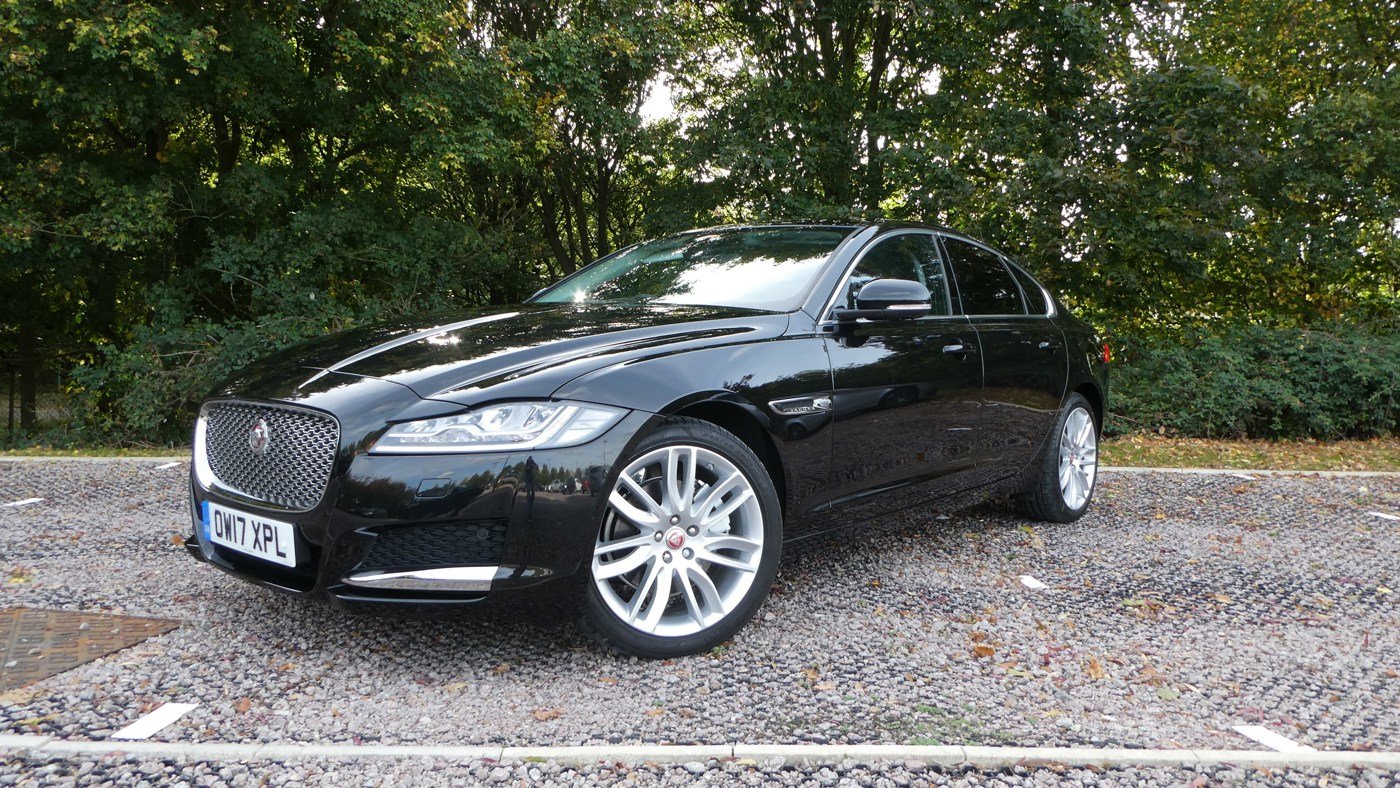
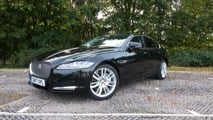
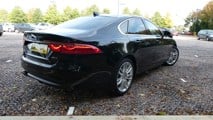
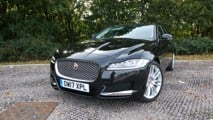
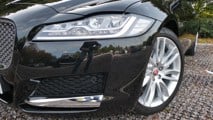
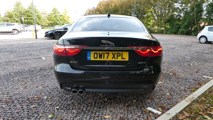
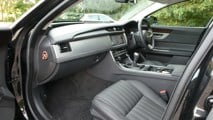
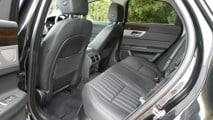
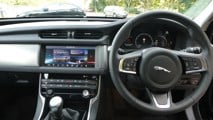
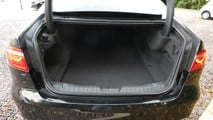
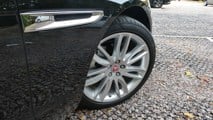



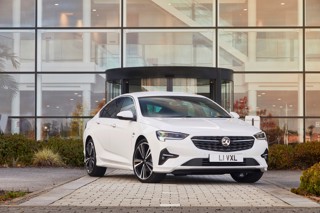
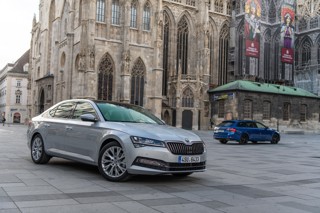
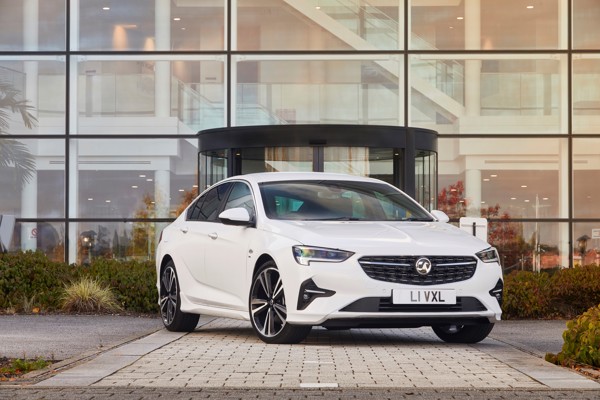
 Diesel
Diesel
